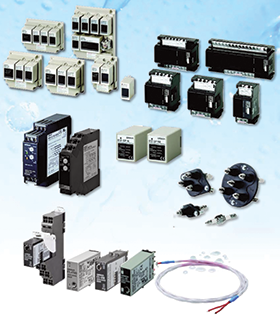

The water industry plays an essential role in delivering safe drinking water and effective wastewater services to society and various industries. The demand for sustainable, clean water is rapidly increasing worldwide. Still, water scarcity is a growing concern in many developing countries.
Ensuring uninterrupted operation is critical in water supply and continuous 24/7 uptime for plant equipment is not negotiable. A lack of maintenance could have severe consequences, as even the failure of a single component can significantly impact operations and maintenance expenses represent a substantial part of the overall costs of water and pumping systems. Maintaining production lines and systems at optimal performance mostly depends on a skilled maintenance team. Effective maintenance strategies include careful planning and scheduling, constant monitoring, a willingness to replace parts before they wear out, as well as the ability to respond to unexpected events.
Preventive maintenance vs predictive maintenance
Most water facilities employing traditional preventive maintenance strategies often encounter challenges in the form of overlooking key signs of failure between their inspections or even prematurely replacing equipment to pre-empt potential failures. These challenges stem from the absence of 24/7 monitoring of critical equipment.
Preventive maintenance (scheduled maintenance) encompasses cyclic maintenance aimed at reducing faults or malfunctions. Its primary objective is to extend the life cycle of assets and minimise downtime, preventing excessive qualitative and quantitative production degradation. Predictive maintenance (preventive maintenance) is executed based on measured and processed parameters to identify the remaining operating time of a machine or component before failure. Various methodologies such as vibration measurement, thermography and analysis of absorbed currents are employed for this purpose.
It is essential to consider the human impact of maintenance. Traditional maintenance heavily relies on experienced technical staff to detect issues, but digital solutions can offer countless advantages for maintenance teams by alleviating the immense pressure faced during stoppages. While it is acknowledged that no maintenance strategy can ensure 100% machine uptime, both preventive and predictive solutions can help alleviate the physical burden on maintenance teams by enabling planned fixes during scheduled downtimes.
Unforeseen mechanical failures resulting in unscheduled operational disruptions affect more than 75% of water supply companies and processing facilities, leading to substantial financial implications and detrimental effects on the company’s standing and the inconvenience experienced by clientele.
Unlike preventive maintenance, which follows a schedule based on historical events, predictive maintenance monitors asset conditions in real time and triggers interventions before failures disrupt production. Advances in sensors, analytics and communication technologies are rendering predictive maintenance increasingly feasible and cost-effective. Transitioning to a predictive maintenance strategy, water processing facilities and portable plants can have confidence that equipment is continuously monitored and that real-time data analysis will unveil potential issues well before actual failures occur.

Getting started
Unplanned downtimes in industrial settings are primarily attributed to ageing equipment (50%), operator error (15%) and time constraints (14%). A report from the Manufacturing Institute indicates that the workforce in plant maintenance is experiencing a shortage of skilled workers as the number of retirees exceeds the number of new entrants. This shortage of skilled maintenance workers can lead to significant financial losses with companies potentially losing up to 10% of their annual profit. When embarking on a predictive maintenance strategy the initial step involves identifying the key elements of the process, including the historical causes of unplanned stoppages and their specific locations within the system. This foundation allows for the establishment of a baseline for the data collection capabilities of their systems.
Retrofitting and modifying existing systems is a cost-effective way to upgrade. By identifying critical components, implementing a predictive maintenance solution involves replicating engineer knowledge for the targeted asset, establishing a baseline of acceptable conditions, adding sensors or monitors to the asset and setting warning and alarm thresholds.
In the water industry typical maintenance tasks involve monitoring membrane filtration water treatment systems for susceptibility to damage and wear due to pressure peaks. It is vital to monitor key assets and identify abnormal vibrations, inefficient system operation, erosion of components and cavitation. Another factor to consider is that hydraulic hammering in pipes can lead to joint dislocation, wall material weakening, bearing wear, shaft vibration, cavitation and insulation degradation.
A case in point is the continuous operation of industrial recirculating pumps. An OMRON client faced challenges in conducting accurate inspections of a motor in its water treatment plant without interrupting pump operation. Scheduling maintenance was complicated due to ongoing production needs leading to the risk of performing service either prematurely or too late, eventually impacting production. By retrofitting the recirculating pump with a vibration sensor the monitoring AI effectively measured high-frequency vibrations, detected abnormalities and analysed failure modes. Alerts provided maintenance engineers with the ability to remotely monitor pump health, assess potential abnormalities and troubleshoot issues without needing to be physically present. This user case highlights how a predictive maintenance solution can optimise maintenance practices and simultaneously support production by preventing unplanned downtime.
When considering total productive maintenance one of the key foundations is the promotion of self-maintenance or autonomous maintenance. This approach is based on two fundamental presumptions: firstly, that system users can respond to the initial indication of an anomaly within the system, and secondly, that individuals with limited technical expertise can be assigned uncomplicated maintenance tasks, such as visual and sensory inspections. Smart maintenance integrates these practices to reduce the need for manual checks and alternatively employs an automatic analysis of critical factors to facilitate preventive maintenance.
The implementation of condition monitoring and intelligent sensors supports predictive maintenance along with the self-maintenance capabilities of equipment through auto-diagnostic functions. Remote maintenance is the ultimate goal of smart maintenance, minimising the need for human intervention on-site.
Moving towards smart maintenance
OMRON offers a comprehensive range of products for the water industry providing advanced technology for continuous equipment monitoring. Advanced predictive maintenance involves data gathering and visualisation from essential plant assets to oversee components and process data effectively, thereby reducing the impact of unforeseen emergencies. Timely notifications about parts and equipment availability and requirements streamline maintenance processes. Remote plant access speeds up issue resolution, reducing travel and consequently lowering carbon emissions.
By implementing advanced maintenance strategies and leveraging innovative technologies the water industry can significantly enhance operational efficiency, reduce downtime and minimise supply disruptions. OMRON’s commitment to providing cutting-edge solutions empowers water utilities to optimise operations ensuring a reliable and sustainable water supply for future generations.
| Tel: | +27 11 579 2600 |
| Email: | [email protected] |
| www: | www.industrial.omron.co.za |
| Articles: | More information and articles about Omron Electronics |

© Technews Publishing (Pty) Ltd | All Rights Reserved